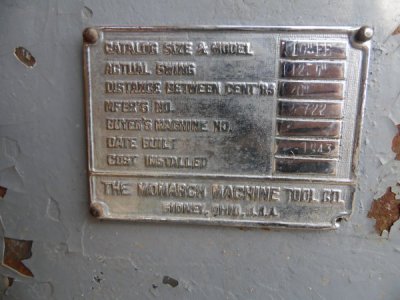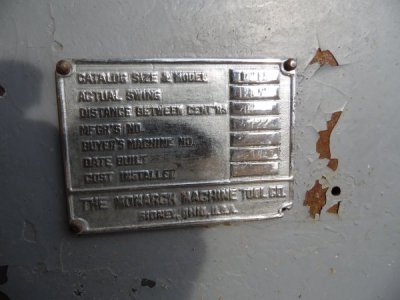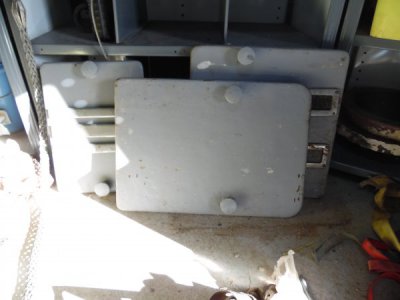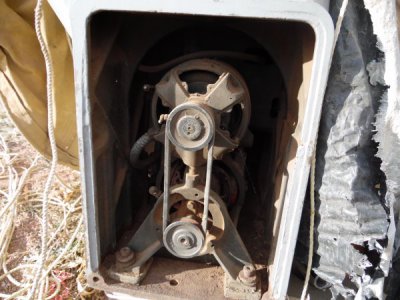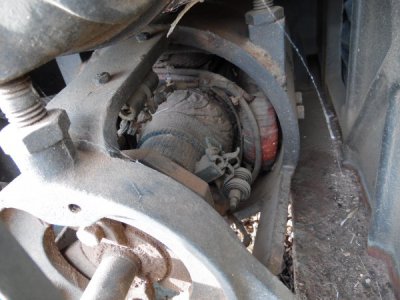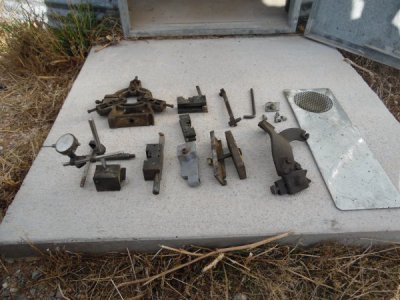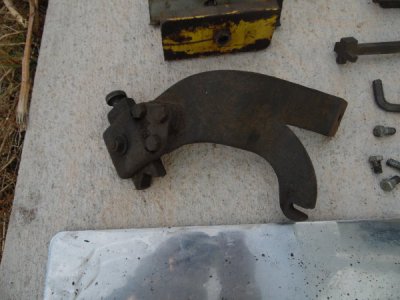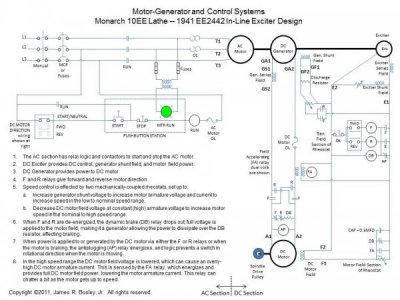Here are the pics of the motor generator and a better pic of the data plate. The manufacturer number is 722. I'm guessing that is the serial number? Also included a pic of all the parts that come with it. The last pic is one part I am not sure as to what it is.
Yes, manufacturer number is the serial number. Part of the serial number is missing. It should be 5 digits for that machine. Look on the right end of the bed, between the tailstock flat way and the front Vee way, it's stamped there.
The belt-driven exciter is in place and appears to be connected. That's good.
You have a vintage Monarch follower rest; nice. The steady rest isn't a 10EE steady; it looks like someone made an adapter to get it to the right height. For no more often than you need one, it will work find.
It you have more than one 3-phase machine, your best bet is to go for a rotary phase converter (RPC). If you get a so called "static phase converter" (SPC), you can use it to make an RPC by just adding an idler motor and some run caps, so I would start there if I was on a budget. I know of several 10EEs running from SPCs.
I agree with mkjs that trying to use a VFD to drive multiple machines, even one at a time, is a bad idea.
A SPC is nothing more than a motor starter, that is, a relay and a starting capacitor (or two). It functions by connecting the starting capacitor(s) to the third phase during startup, much the same way that a capacitor-start single-phase motor is started. Better SPCs include run capacitors to continue to power the third phase after the starting caps kick out, directing current from the other two sets of windings into the third set of windings, as the phase of the voltage changes. An RPC is just a SPC with an idler motor (any 3-phase motor will work, 7.5HP being a good size for a 10EE). The idler motor acts as a mechanical capacitor, providing current for the third phase of the load machine. Correctly balanced, an RPC can provide fairly well balanced 3-phase voltage to a machine.
WNY Supply has a static converter for $75 with free shipping:
http://phaseconverterusa.com/3--5-HP-HD-SCX-Static-Phase-Converter-_p_33.html
WNY used to have a their own webpage with a lot more products; it looks like they are now being sold through phaseconverterusa. I don't know if this converter includes run capacitors or not. If not, I would add two run caps to help balance the third phase. Some 10EE owners have reported issues with static converters when rapidly reversing the spindle and I believe that the lack of run caps is a explanation for that problem.
The photo of the commutator is that of the generator. It looks very dirty. I would remove the brushes and clean all the three commutators with a toothbrush and solvent (letting the solvent dry overnight) before trying to run the machine. You may need to replace the exciter's belt if it's been sitting a long time.
I still need to see what's under the cover on the headstock end. Take photos of the insides of the DC Control Panel, the large box to the right of the DC motor, and the big rheostats above it.
Would it be possible for you to upload higher resolution photos, or put them on something like DropBox or PhotoBucket?

